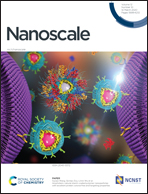Understanding the structural diversity of freestanding Al2O3 ultrathin films through a DFTB-aided genetic algorithm†
Abstract
(Sub)nanometre-thin alumina films are frequently encountered due to the self-limited oxidation of Al and its alloys, and seem to display an even larger structural variety than bulk alumina itself. While the nature of the underlying substrate and the oxidation kinetics are known to modulate the structure of supported films, understanding the intrinsic stability of freestanding films constitutes an important first step in itself, especially when the interaction with the substrate is rather weak. Using a combined tight-binding/DFT genetic algorithm approach, we identify particularly stable θ(100)-type films along with a host of novel stable thin film structures. Several of these correspond to cuts from relatively high energy bulk structures, e.g. dehydrated boehmite, pseudo-CaIrO3, defective rocksalt and LuMnO3, which are not commonly associated with alumina. DFT calculations allow to rationalize this stability reversal with respect to α-Al2O3 in terms of low surface energies compared to α(0001) and to identify the underlying mechanisms: breaking a low density of relatively weak Al–O bonds, filling of Al surface vacancies, and polarity-induced relaxation of the whole film. These observations provide interesting insights into existing supported ultrathin films.



 Please wait while we load your content...
Please wait while we load your content...